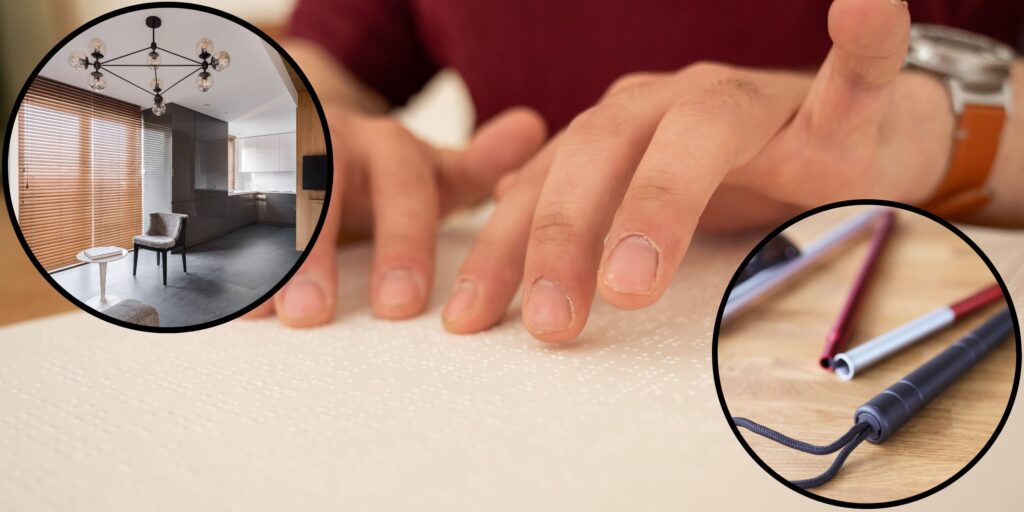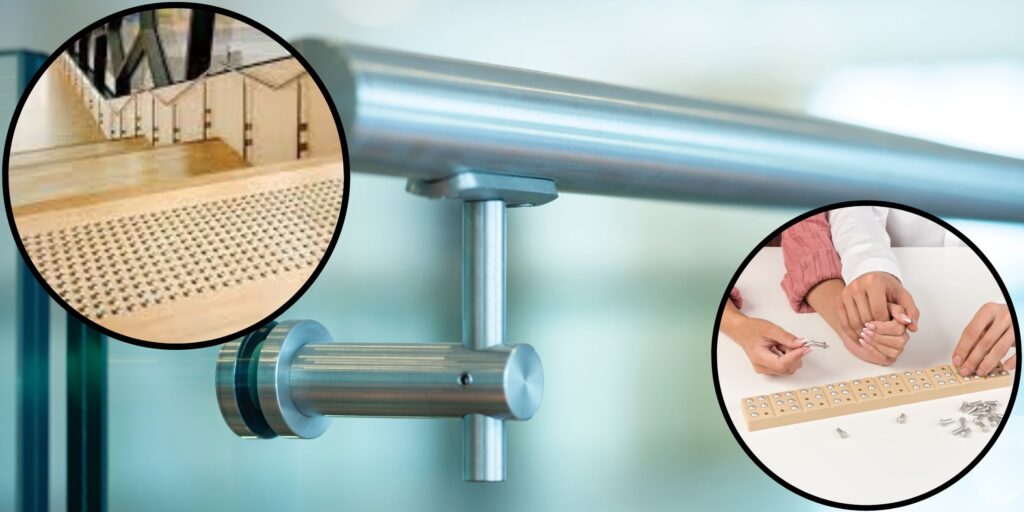Author, journalist, and supporter of accessibility for the visually impaired, Ryan Knighton does it all. Knighton, who has been blind since he was 18, has overcome many challenges in his life, including those pertaining to house repair. In this post, we’ll look at some of the tools and equipment, planning and preparation, adjusting home features, and DIY projects that are suitable for visually impaired folks that Knighton recommends.
Accessibility for all people, regardless of ability, is why it’s crucial to discuss do-it-yourself home remodeling for the visually impaired. DIY projects may make homes more pleasant and accessible for people who are visually impaired if they have the necessary tools and adaptations.

Hardware and Gadgets
Having the proper equipment is a must to beginning any do-it-yourself job. It may be required to modify tools so that they may be used by people with vision impairments. Talking tape measures and braille markings are only two examples of the kinds of built-in accommodations that may already be present in some instruments. Those with visual impairments can benefit greatly from these.
Unfortunately, such specialist equipment can be quite pricey. There are low-cost alternatives for people who are strapped for cash. Tool identification by touch, for instance, can be achieved by the use of tactile markers. Hammer and screwdriver handles can be made more manageable by dotting them with puff paint or hot glue.
Making plans and getting ready
DIY projects fail more often than they succeed because of poor planning and preparation. Visually challenged people can benefit greatly from tactile planning items and explicit vocal directions. Raised lines and textured materials can be used to create a tactile floor plan or diagram. To further ensure that people with visual impairments understand the procedure and can complete the project independently, it is helpful to include vocal instructions that describe the phases in detail.
It can be helpful to enlist the aid or support of loved ones or trusted advisors. Having someone else read aloud directions or assist with visually-demanding tasks like measuring and cutting are two examples.
Modifying Existing Structures
Visually impaired people can make their houses more pleasant and functional by modifying various components to increase accessibility. Light switches and thermostats can be marked with tactile indicators to aid the visually impaired in finding and using them. Using a bold hue to define door frames is just one example of how you may utilize color contrast to draw attention to specific parts of a room.
The addition of grab bars and handrails can help with movement, and motion-sensor lighting can make it easier to see in the dark. These modifications can be easy to implement, inexpensive, and highly beneficial to the quality of life for people who are blind or visually impaired.

Do-It-Yourself Activities for the Blind and Visually Impaired
Several do-it-yourself tasks are accessible to those with vision impairments. There is a wide spectrum of complexity in these endeavors. Making a sensory garden is one way to accommodate the sensory needs of those with low eyesight. You can do this visually by adding plants with unique textures or scents, or aurally by setting up water features or wind chimes.
Putting up a handrail on a ramp or staircase is still another illustration. This easy-to-accomplish task requires only common household items and can significantly enhance home security and accessibility.
Always use caution when attempting a DIY project, and remember that it’s fine to ask for assistance or hire a professional if you get stuck.
Conclusion
In conclusion, tips on how the visually impaired might make their houses more accessible and comfortable are an essential topic. DIY projects can make a home more functional and pleasurable for the visually impaired if the correct tools, planning, and preparation are used. Putting accessibility first helps ensure that people of all abilities can enjoy the benefits of a shared area. For the visually handicapped who are considering attempting DIY projects, Ryan Knighton’s thoughts and expertise are invaluable resources.
To review, some of Knighton’s do-it-yourself home improvement hacks for the visually impaired include: using specialized tools or affordable adaptations to make tools more accessible; using tactile planning materials and detailed verbal instructions for planning and preparation; adapting home features for accessibility using tactile markings and color contrast; and tackling DIY projects that are well-suited for visually impaired individuals, such as creating a sensory garden or constructing an accessible ramp.
DIY projects may make homes more accessible and comfortable for people with visual impairments, and this confidence should be encouraged. Overcoming the obstacles of low eyesight and making a personalized environment is doable with the correct resources, preparation, and assistance. We can make the world a better place for everyone if we commit to making our homes more accessible to those with physical limitations.